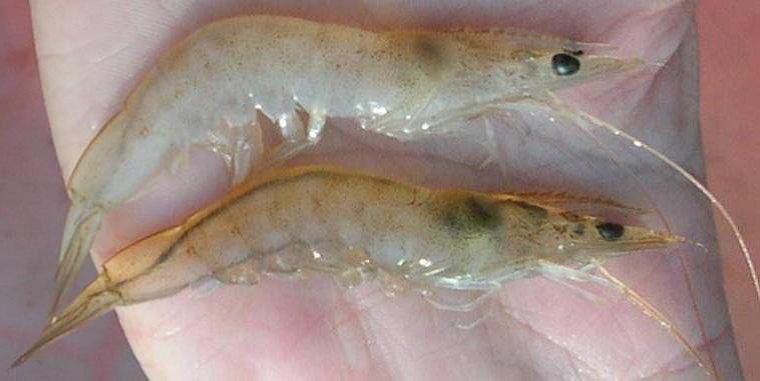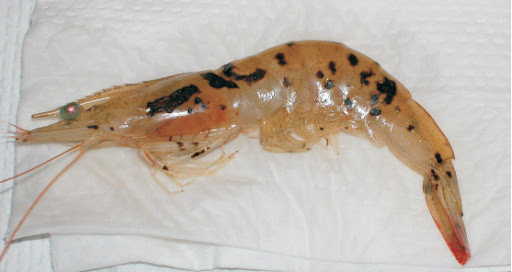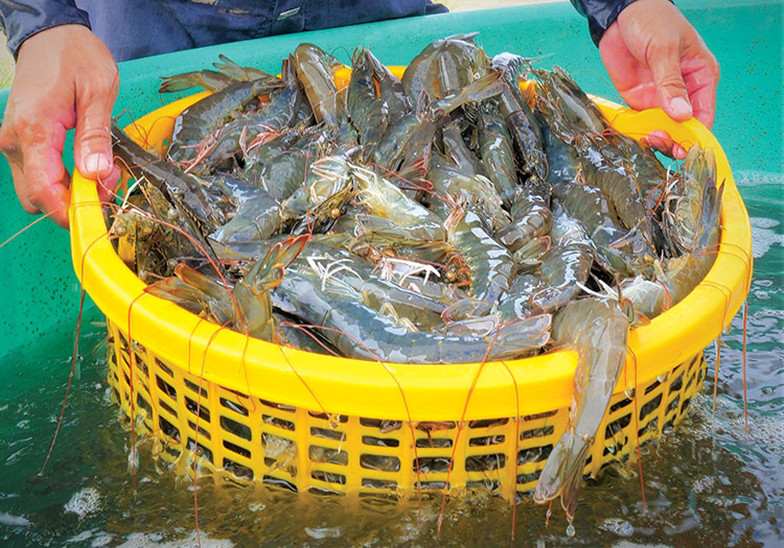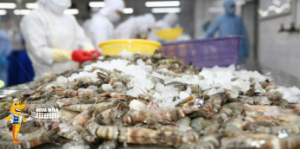Getting to Know the Taura Syndrome Virus (TSV) in Vannamei Shrimp
The Taura Syndrome virus was first identified in 1992 during an outbreak that caused economic losses in Ecuador. Since then, TSV disease has become a significant concern in the aquaculture industry.
So, what are the signs that shrimp are infected with Taura Syndrome Virus (TSV), and how is it treated? Come on, find out more in this article.

What is TSV?
Taura Syndrome Virus (TSV) is a disease of vannamei shrimp caused by an infectious virus that affects shrimp farming in various parts of the world. The disease caused by this virus first appeared in Ecuador in 1992. However, it later spread to Asian regions by importing infected fry and broodstock.
TSV is classified as a small icosahedral virus that belongs to the virus family called Dicistroviridae. This virus has a single-stranded RNA genome of about ten kilobases.
The Taura Syndrome virus infects the hepatopancreas, the digestive gland of the shrimp, and causes severe necrosis, which results in the death of organ function. This virus can also cause gill discoloration, lethargy, and mass death.
Transmission of Taura Syndrome Virus
Taura Syndrome Virus (TSV) is transmitted through water, infected shrimp and contaminated equipment. This virus can also be transmitted vertically from infected broodstock to the resulting fry.
In addition shrimp that have been infected with TSV can still be carriers of the virus for the rest of their lives. Migratory birds, aquatic insects, and humans can also be a route for transmission of this virus.
The Taura Syndrome Virus can also infect through the excrement of seagulls that previously ate shrimp infected with this virus.
Symptoms of TSV in Vannamei Shrimp
Vannamei shrimp that are attacked by TSV usually show more than one symptom. Here are some common symptoms:
Shrimp become lethargic
Decreased appetite
The prawns gathered at the edge of the pond when they were almost dead
High and sudden death rates in post larvae and juvenile shrimp.
The shrimp’s stomach is empty, and the shrimp’s body is pale red
Fan tail and shrimp pleopods are red

Shrimp shells softened
There are dark spots that are randomly distributed on the cuticle of the shrimp.
How to Detect TSV Disease
Detection of Taura Syndrome Virus (TSV) disease can be done by PCR (Polymerase Chain Reaction) method, gross pathology, in situ hybridize, and bioassay. However, detection by PCR (Polymerase Chain Reaction) is the most accurate method that can be done.
Examination by the PCR method consisted of three stages, namely extraction of DNA/RNA samples for preparation of prints, DNA/RNA amplification with the help of a PCR machine (thermocycler) and analysis of the amplification results by electrophoresis, DNA/RNA staining and documentation with a Polaroid camera.
Control and Treatment
Until now, no vaccine is available to prevent transmitting this TSV disease. The precautions that farmers can take at this time is to control its spread.
One of the most effective preventive measures is to ensure the use of broodstock and frying free of the Taura Syndrome Virus (TSV). In addition, regular testing of shrimp populations and strict biosecurity measures can also help reduce the risk of infection.
Cre: delosaqua.com
Contact AQUA MINA for consultation and supply of aquaculture round tanks and aquaculture equipment for high-tech shrimp farming.
- Address: 685 National Highway 1A, Binh Hung Hoa Ward, Binh Tan District, Ho Chi Minh City
- Phone: 1800 6071 (Toll-free hotline)
- Email: sales@aquamina.com.vn or oversea@aquamina.com.vn
Aqua Mina's distributor in Japan:
REX INDUSTRIES CO., LTD
- Address: 1-9-3 Hishiya-Higashi, Higashi-Osaka 578-0948 JAPAN
- Email: kimakubo@rexind.co.jp
- Phone: +81-(0)72-961-9893
- Website: http://www.rexind.co.jp/e/

WE WORK FOR YOUR SUCCESS!
Ngày đăng : 22/01/2025
2282 View
Other Articles
Portuguese food group acquires 18% stake in cod farming company Norcod
Indonesia implements radioactive-free shrimp certification for exports to the United States
India is world’s second-largest shrimp producer. That is now under threat
Ca Mau’s shrimp industry moves towards “green” growth
Floods devastate aquaculture, processing operations in Vietnam
Ecuador Leads Global Shrimp Exports, Surpassing USD 7 Billion in 2025
India's marine product exports rise 16% as new markets offset US dip
Skretting presents the first shrimp feed with insect meal in Vietnam
Sharing: EU increases shrimp imports in the first 9 months of the year
Gideon De Oro opens high tech Cebu shrimp plant, to revive exports
White-leg shrimp facing WSSV: When density and environment fluctuate together



















.jpg)